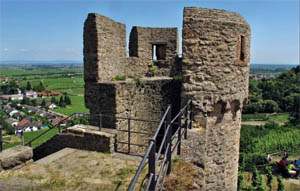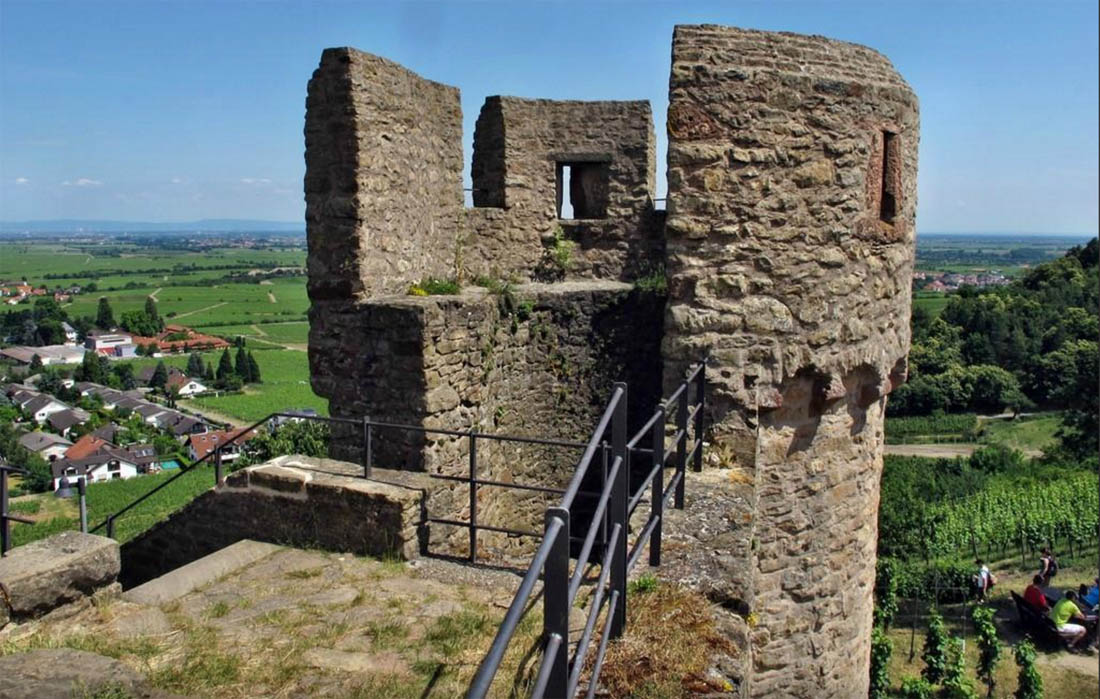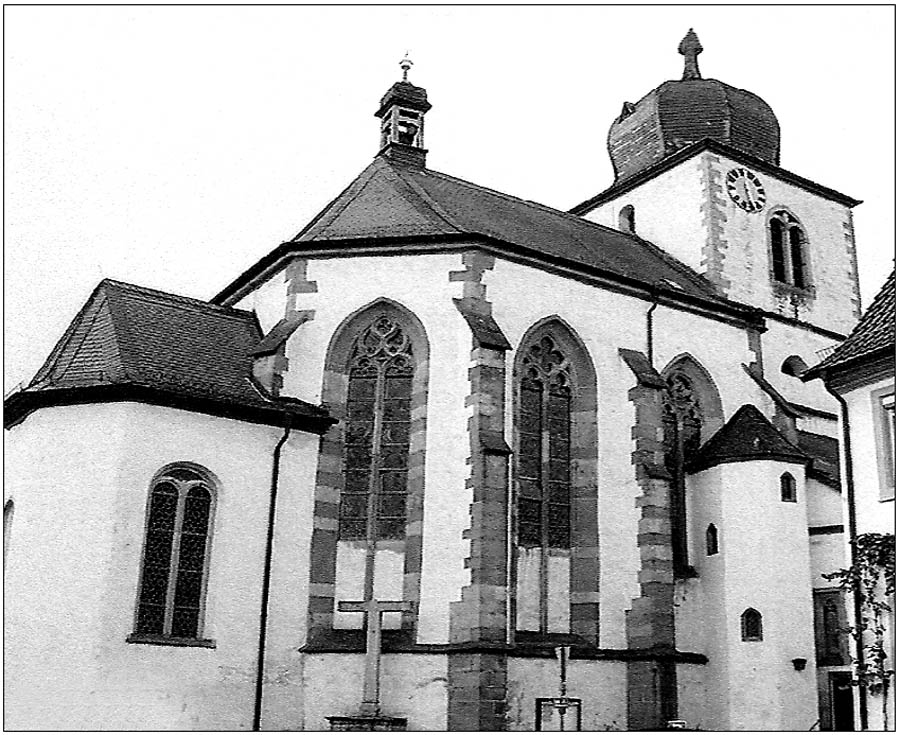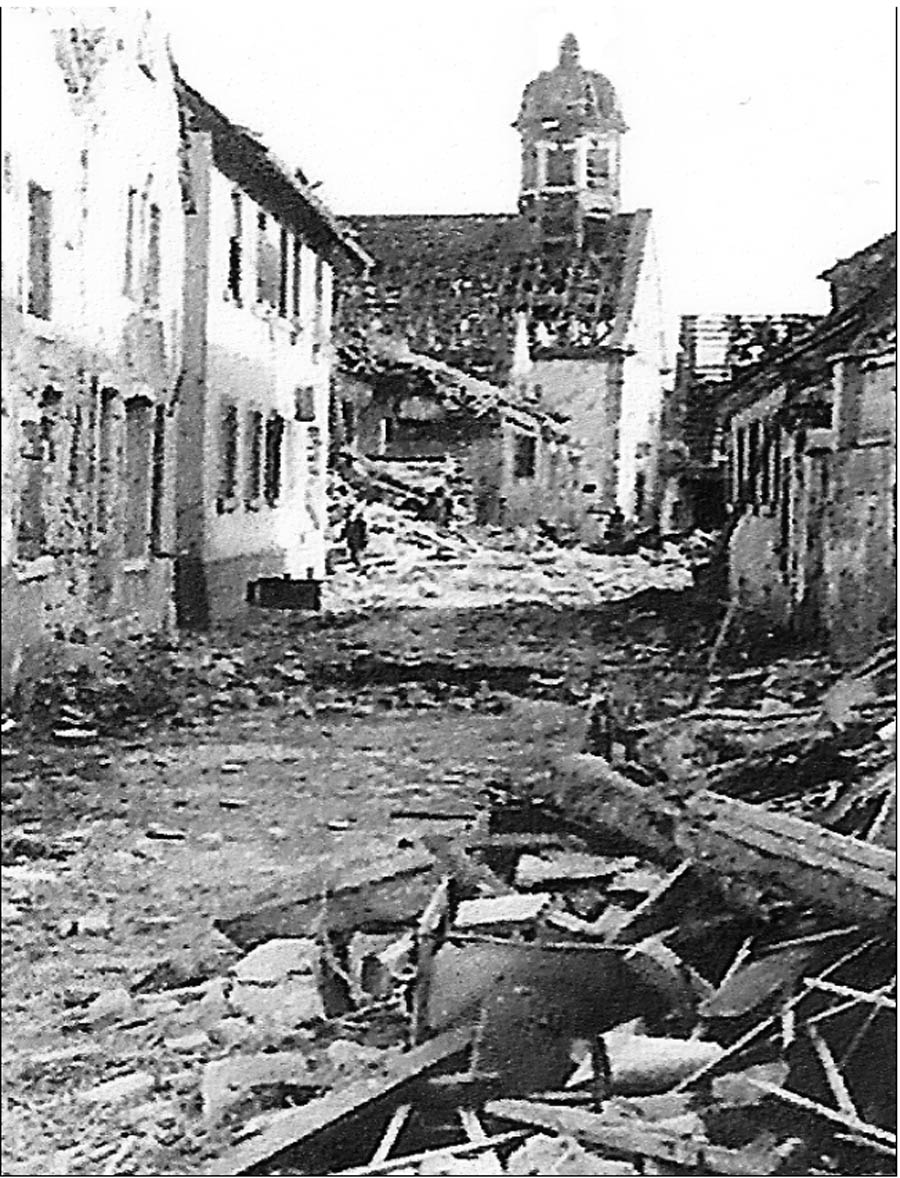Historically, the beginning of Wachenheim can be traced back to the late 6th or the early 7th century. The town is very proud of the ancient town wall, which in days gone by used to be 1,200 meters long and after which, after the town was awarded its own town rights in 1341, ensured its protection.
Like the castle ruins of Frankenstein and Dürkheim, the Wachtenburg Castle ruin at Wachenheim would number among several ancient sites in the Fatherland that would have remained in the memories of the Christlieb family, after immigrating to America.
Wachenheim and Bad Dürkheim are part of a collection of some twenty odd towns that comprise the “Deutsche Weinstrasse” (German Wine Road), which cuts through the foothills of the Palatine forest off the west band of the Rhine River.
An anonymous, enthusiastic tourist wrote, “Deutsche Weinstrasse encompasses some of Germany’s most beautiful scenery, embracing huge vineyards over rolling hills at the foothills of densely forested mountains with little towns following the terrain beautifully. It really is one of the prettiest drives you will ever take.”
On the eastern side of the ancient town is a Jewish Cemetery that has been in existence for centuries. There, not only Jewish people from Wachenheim were interred, but also Jews from the whole region between Frankenthal and Speyer. Considering the great radius that from whence the Jewish people were brought to Wachenheim for burial, there is cause to believe that Friedrich Carl’s parents and other relatives were probably buried at Wachenheim.
Although it is not clear how Wachenheim figures into Anna Catharina Christlieb’s background, certain indicators suggest familial ties with that village, in connection with her first marriage to Johann Gottfried Bock.
Anna Catharina and Gottfried were married in 1736 at Dielkirchen, some miles north of Wachenheim. Their son, Johann Gottfried Bock was born the following year. In 1740, their daughter, Johanna Susanna Elizabetha Bock, was born on 9 June 1740 and was baptized three days later in ceremonies in the Schlosskirche at Dürkheim.
A translation of her baptismal entry reads:
“On 9 June there was born a little daughter to Gottfried Bock a salt-weigher at the salt distillery at Schönfelden and his lawful wedded wife, Anna Catharina, who was baptized on the 12th of the same month… Trinity Sunday, and christened Johanna Susanna Elisabetha. The sponsors are Johann August Bock, Innkeeper at the White Bear Inn in Mannheim and his lawful wedded wife, Maria Susanna, as well as Herr Johann Phillipp Büttner, in service with your Excellency, Lord Privy Chamberlain von Beusten, as well as Fraulein Susanna Elisabetha Bruch, adult unmarried daughter of the well-situated citizen and merchant at Wachenheim, Herr Johann Caspar Bruch.”
It is obvious that Johann August Bock and his wife, Susanna, represented Gottfried’s side of the family. Uncertainty of familial relationship rests with the infant’s sponsor and namesake, Susanna Elizabetha Bruch, who could have been from either parent’s side of the family. It is possible that the child’s first name, Johanna, was drawn from the third sponsor, Johann Phillip Büttner, who was also employed at the saltworks near Dürkheim.
Research reveals that Caspar Bruch, “the well-situated citizen and merchant at Wachenheim,” figured prominently in the Lutheran Church in that community. Known as St. George’s Church, the edifice served both Catholics and Protestants from 1701 until 1789, when the Catholics of Wachenheim built their own church.
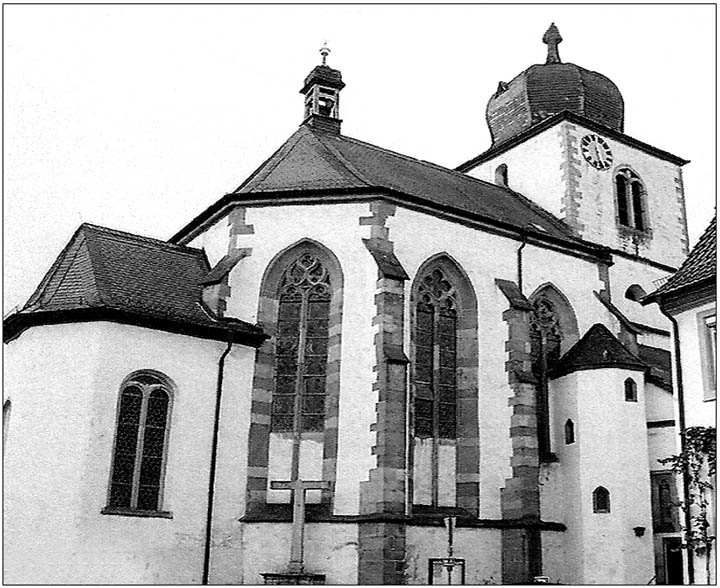
St. George’s Church at Wachenheim, restored after its near destruction during World War II.
It is the author’s feeling that the Bruch family may have been closely related to Anna Catharina. There is a hint that her mother’s maiden name was Bruch.
With family ties to Wachenheim and its proximity to Dürkheim, Friedrich Carl and Anna Catharina may have resided at Wachenheim after their marriage. The incomplete church records during those years leaves open the possibility that Jacob was born and baptized there, for it is known that residents of Grethen were permitted to worship either at Wachenheim or Dürkheim.
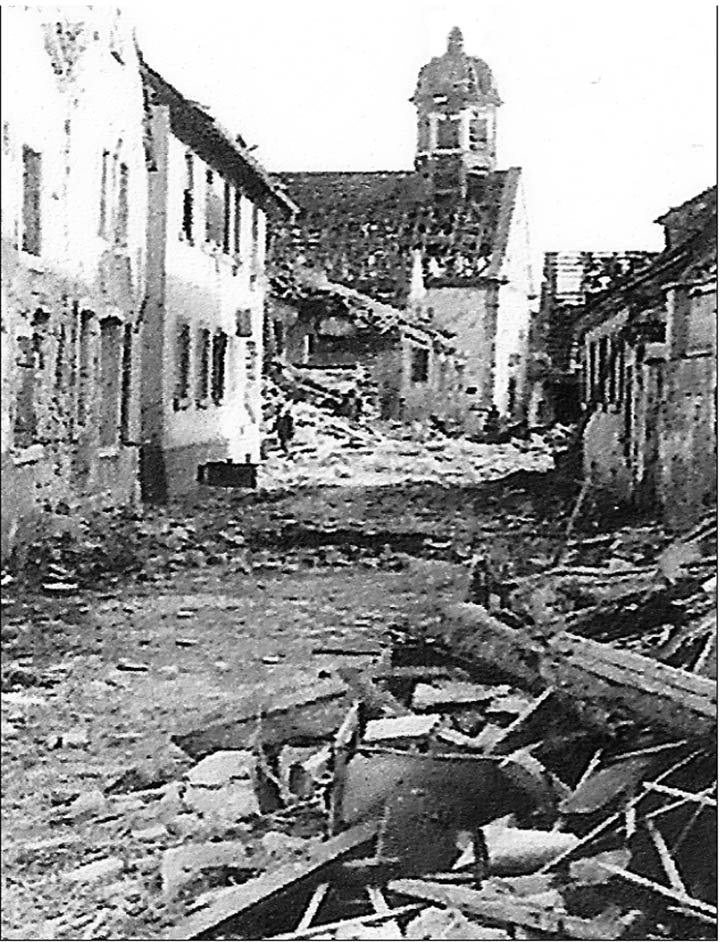
Wachenheim suffered terrible destruction during World War II.

